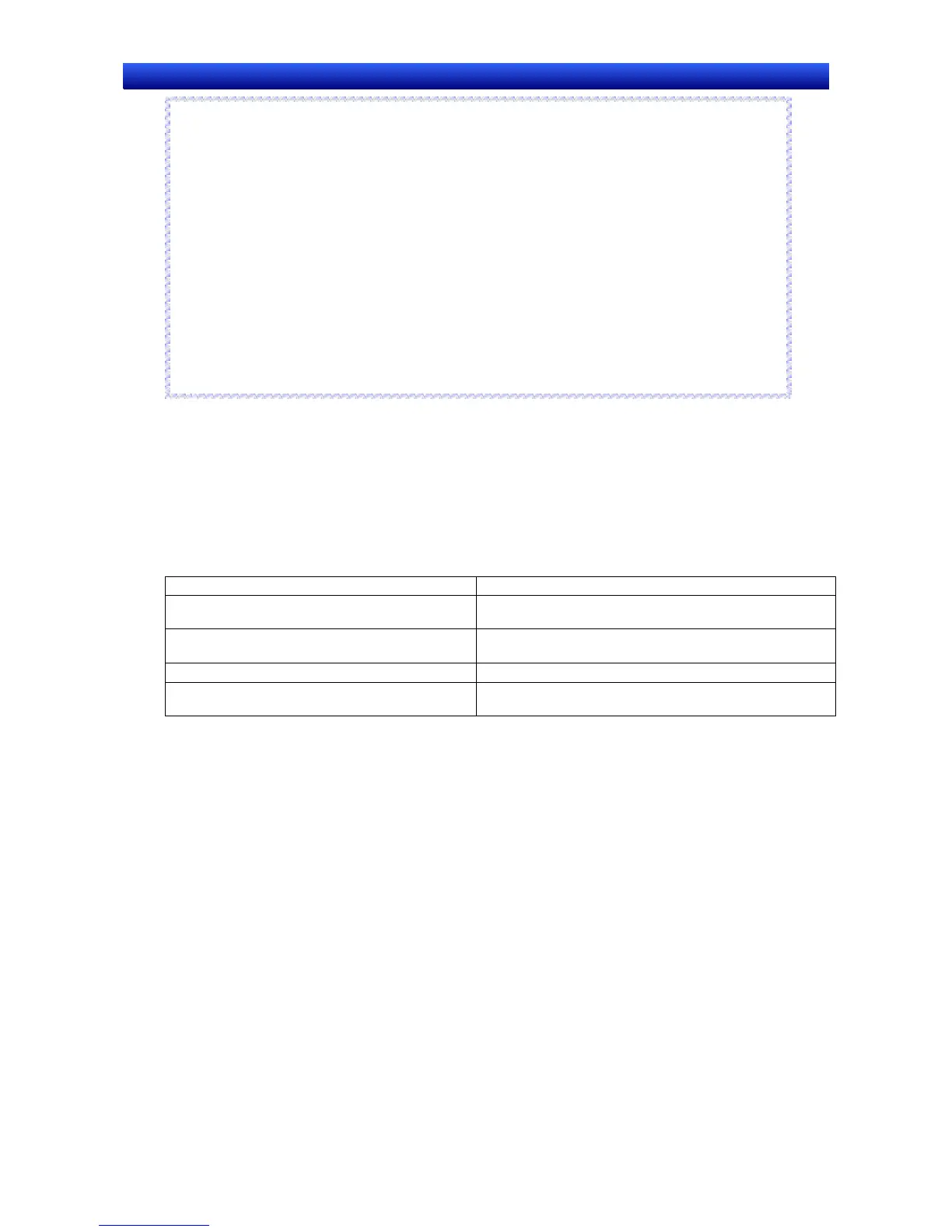Section 13 Multi-language Display 13-2 Creating Multi-language Display Screens
NS-Designer Operation Manual NS-Designer Operation Manual NS-Designer Operation Manual
Reference
♦ Unicode
Characters are input and displayed on a computer (not just with the NS Series), using a character
code. Each character is assigned a number based on this code.
For example, the number 41 hex is assigned to the letter “A”. Sentences can be constructed, words
can be arranged, and characters can be displayed on the screen using this code.
ISO has established a character code for alphanumeric characters (i.e., numbers and letters of the
alphabet). Windows and the NS Series use the ISO8859/1 character code to represent characters
for English, French, Italian, German, and other western European languages.
Asian languages, such as Japanese, Simplified Chinese, and Traditional Chinese use a large num-
ber of characters and there are character codes for these languages that have been defined by
standards organizations (e.g., JIS in Japan and GB in China).
“Unicode” is a character code that was established with the purpose of unifying the various western
European and Asian languages. Windows NT, 2000, and XP as well the NS Series use Unicode to
achieve multi-language display with ease.
R
R
e
e
f
f
e
e
r
r
e
e
n
n
c
c
e
e
13-2-2 Displaying Multi-language Characters Using Indirect Object
Specification
With the NS Series, multi-language display is created when Unicode-format text files for text objects
and list objects with multi-language input are read. Also, with data block tables, reading/writing of data
files is possible in Unicode format. Unicode format also allows multi-language display to be used for the
log output of alarm/event history and the import/export of CSV files.
The objects for which data can be read or displayed using Unicode are given in the following table.
Object name Operation
List objects Files storing character strings in Unicode format are read
and displayed as lists.
Text objects Files storing character strings in Unicode format are read
and displayed.
Data block settings Data files are read and written.
Log output CSV files edited in Unicode format can be imported and
exported. Log output to CF is also possible.
In order to display multiple languages using indirect specification of object properties, the following set-
tings are required.
1. Create the indirectly specified Unicode text.
2. In the Property Settings Dialog Box for the objects, set the character code to Unicode.
3. Specify the indirectly specified file name in the Property Settings Dialog Box.
13-9

